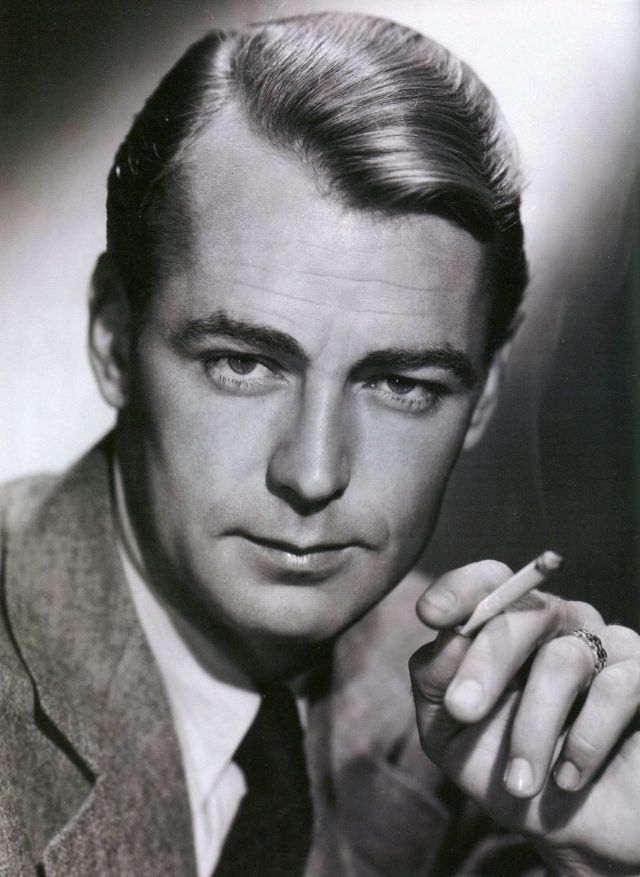Born 1913 in Hot Springs, Arkansas, American actor Alan Ladd found success in film in the 1940s and early 1950s, particularly in Westerns, such as
Shane (1953) and in films noir.
Ladd was often paired with Veronica Lake in noirish films, such as This Gun for Hire (1942), The Glass Key (1942), and The Blue Dahlia (1946). His other notable credits include Two Years Before the Mast (1946), Whispering Smith (1948), which was his first Western and color film, and The Great Gatsby (1949).
In 1950, the Hollywood Women’s Press Club voted Ladd the easiest male star to deal with in Hollywood. The following year, a poll from the Hollywood Foreign Press Association listed Ladd as the second most popular male film star in the world, after Gregory Peck.
Ladd’s popularity diminished in the mid 1950s, though he continued to appear in numerous films, including his first supporting role since This Gun for Hire in the smash hit The Carpetbaggers in 1963.
Ladd died of an accidental combination of alcohol, a barbiturate, and two tranquilizers in 1964, aged 50. He has a star on the Hollywood Walk of Fame at 1601 Vine Street. His handprint appears in the forecourt of Grauman’s Chinese Theatre in Hollywood. In 1995, a Golden Palm Star on the Palm Springs Walk of Stars was dedicated to him.
Take a look at these vintage photos to see a young and handsome Alan Ladd in the 1940s.

























































.jpg)


.jpg)

